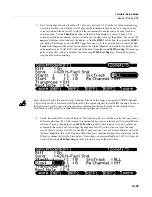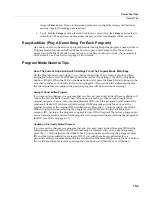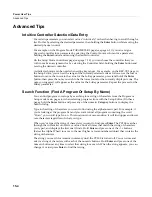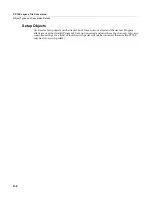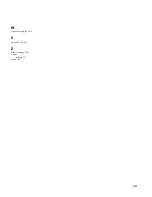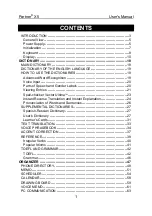
15-10
Power User Tips
Advanced Tips
Create A User Shift Or Velocity Pattern For Custom Arpeggiations
The
PC3LE’s
arpeggiator
can
trigger
melodic
sequences
called
shift
patterns,
and
velocity
sequences
called
velocity
patterns.
Shift
patterns
allow
you
to
trigger
complex
arpeggiations
by
playing
a
single
key,
and
velocity
patterns
allow
you
to
add
complex
velocity
changes
to
arpeggiations.
The
PC3LE
comes
with
a
number
of
factory
shift
and
velocity
patterns,
but
you
can
also
program
your
own
in
Setup
mode
for
custom
arpeggiations
and
velocity
patterns.
For
details
on
using
and
creating
shift
patterns,
see
Shift
Pattern
(ShiftPatt)
on page 7
‐
41.
For
details
on
using
and
creating
velocity
patterns,
see
the
Pattern
setting
under
Velocity
on page 7
‐
37.
Record A Short Song For Use As A Riff, Record A Setup To Song Mode
Riffs
are
full
songs
or
individual
tracks
of
a
song
created
in
the
PC3LE
sequencer
that
you
can
trigger
in
setup
mode.
Every
zone
in
a
setup
can
have
it
ʹ
s
own
riff—a
completely
independent
sequence.
Riffs
can
be
used
to
accompany
your
playing
like
a
backing
track,
but
riffs
give
you
more
options
such
as
endless
looping,
stopping
or
starting
different
instrument
parts,
the
ability
to
transpose
instruments
or
change
tempo
during
playback,
and
many
other
options.
To
create
your
own
riffs,
first
record
and
save
a
sequence
in
Song
mode.
A
riff
can
play
single
or
multiple
tracks
of
a
song
at
once.
To
get
started
with
Song
mode,
see
Chapter 13,
Tutorial:
Song
Mode
.
If
you
have
a
setup
that
you
want
to
add
newly
recorded
riffs
to,
it
may
be
easier
to
record
the
setup
into
Song
mode.
To
do
this,
see
Recording
A
Setup
To
Song
Mode
on page 7
‐
67.
Lastly,
see
Basics
Of
Using
Riffs
on page 14
‐
35
for
tutorials
on
using
and
adding
riffs
to
setups.
Summary of Contents for PC3LE
Page 14: ...x...
Page 28: ...2 10 Startup Software Upgrades...
Page 42: ...3 14 User Interface Basics Quick Song Recording and Playback...
Page 46: ...4 4 The Operating Modes Using the Modes...
Page 196: ...8 4 Quick Access Mode The QA Editor...
Page 226: ...9 30 Master Mode UTILITIES...
Page 260: ...10 34 Song Mode and the Song Editor Song Editor The EVENT Page...
Page 272: ...11 12 Storage Mode Format...
Page 286: ...12 14 Keymap and Sample Editing Editing Samples...


